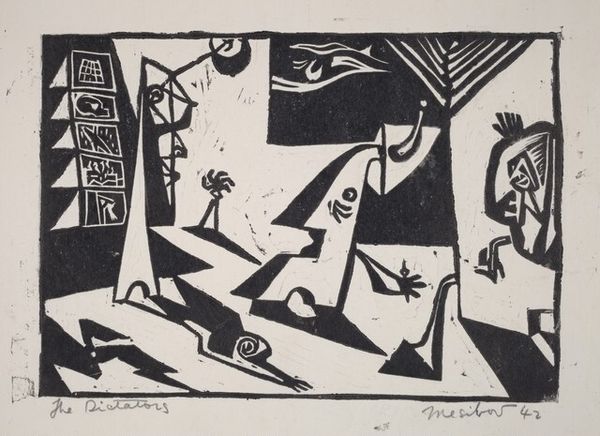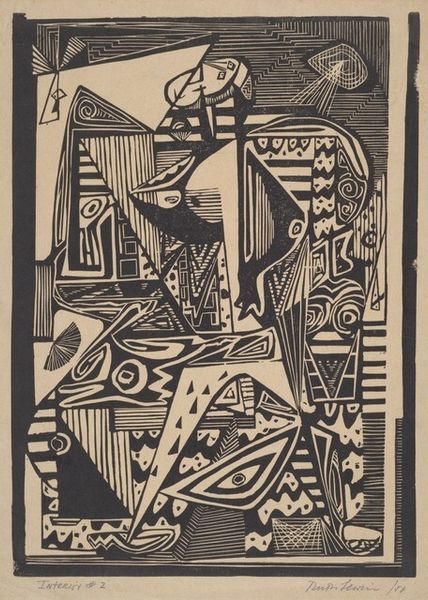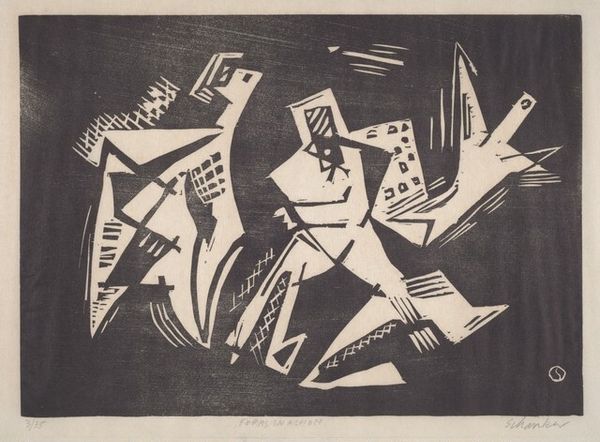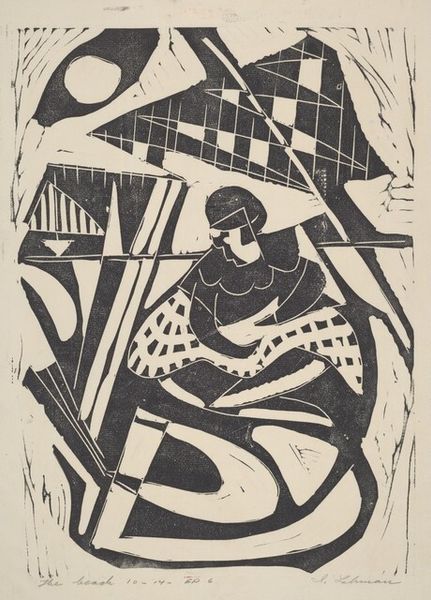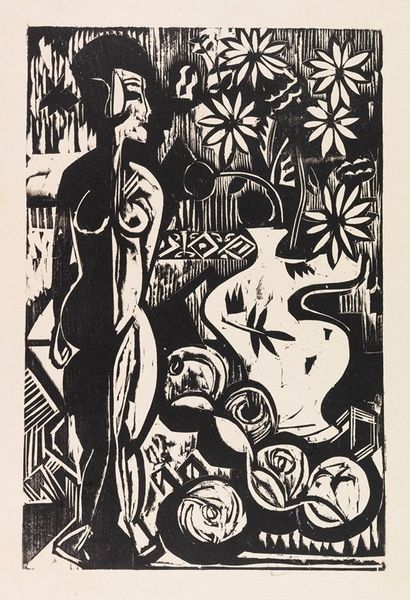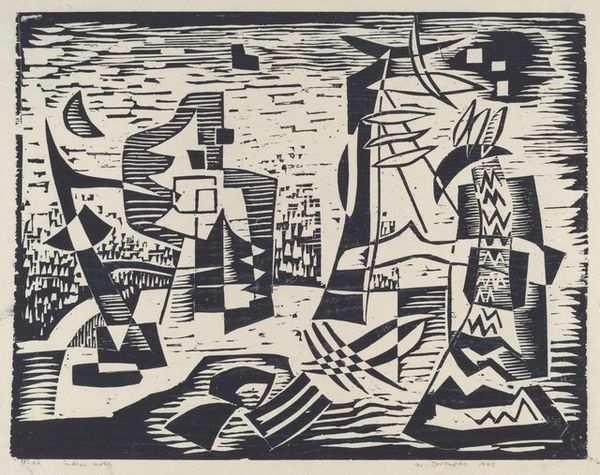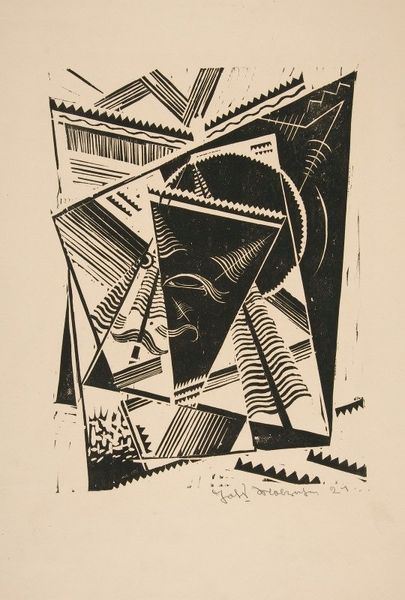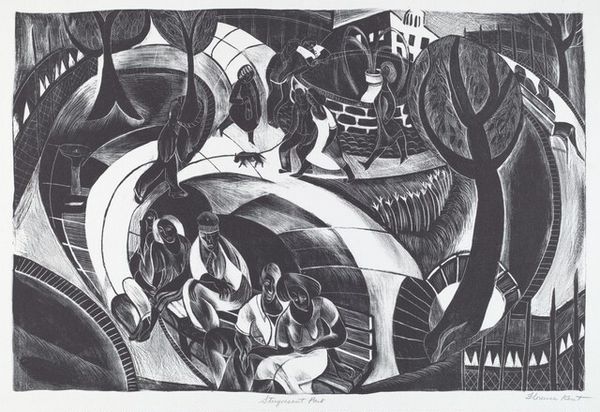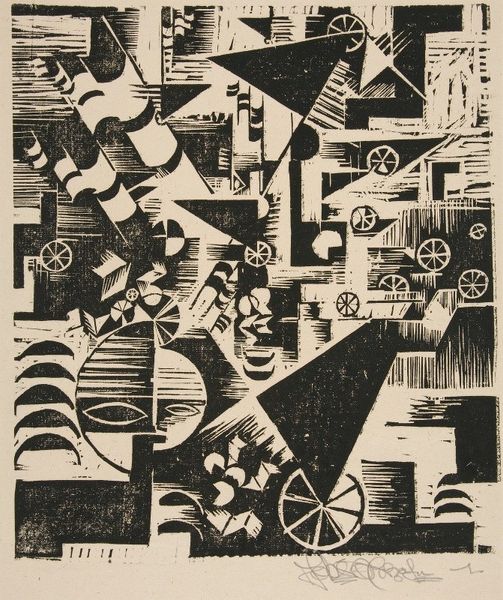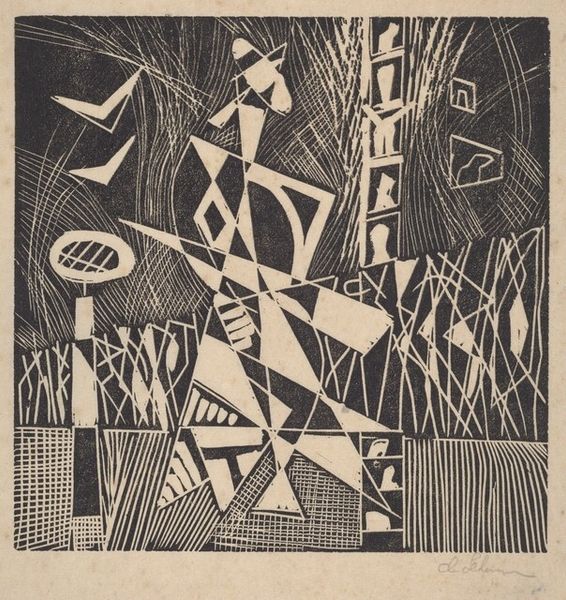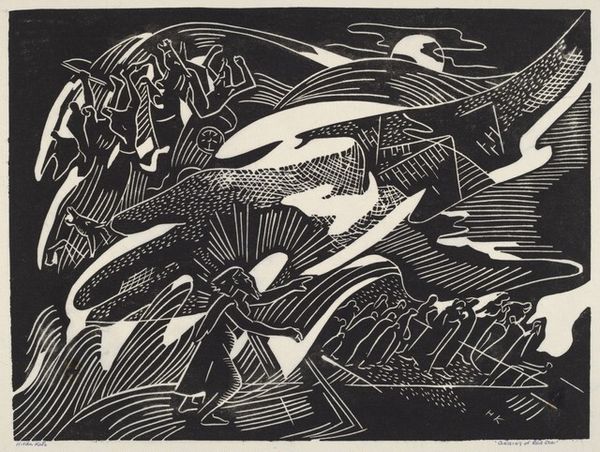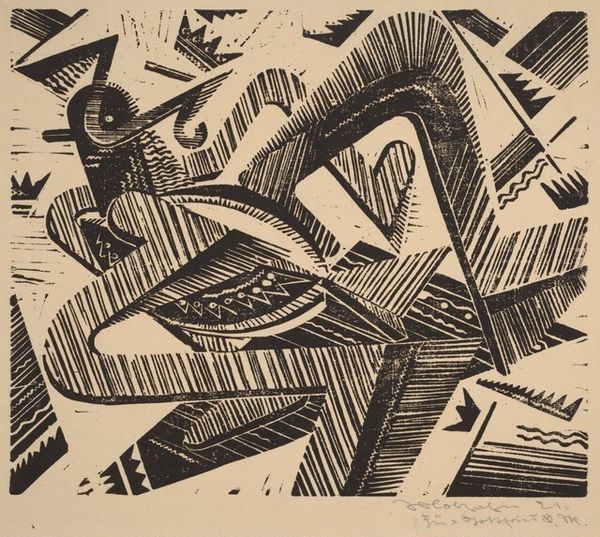
graphic-art, print, woodcut
#
graphic-art
#
narrative-art
# print
#
linocut print
#
woodcut
#
pop-art
#
modernism
Dimensions: image: 36.5 x 45.7 cm (14 3/8 x 18 in.) sheet: 43.2 x 52.7 cm (17 x 20 3/4 in.)
Copyright: National Gallery of Art: CC0 1.0
Curator: What a dynamic image! The bold black and white contrast really leaps out. It feels… almost unsettling in its starkness. Editor: I see it more as energy than unsettling. We are looking at Roy Lichtenstein's "The United States and the Macedonian," created in 1953. It’s a print—most likely a woodcut or linocut given the style. Curator: Woodcut makes sense. The stark contrast is what gets me—a black and white struggle, a naval conflict distilled into raw, graphic forms. Are the sharp angles and strong diagonals supposed to evoke a feeling of tension? It almost reminds me of some heraldic symbol. Editor: The material itself—the wood—imposes a certain rawness. Woodcut and linocut are subtractive processes, meaning the artist has to physically carve away material to create the image. Each line is deliberate. Think of the labor involved, the hand of the artist directly shaping the scene of conflict. Curator: And consider the visual vocabulary Lichtenstein employs: simplified forms of sailing ships locked in combat. You almost don't need any historical context. It represents that archetypal conflict, that push and pull… Editor: Well, the historical context *is* important! The USS United States did, in fact, capture the HMS Macedonian during the War of 1812. So even abstracted, it references that event. Curator: Of course. But the lasting appeal, I believe, lies in that almost primal feeling. A universal fight between opposing forces. It's there, even without knowing the naval history. A battle rendered into pure image. Editor: True. Lichtenstein's later pop art gets all the attention, but works like these ground his aesthetic. You see the careful, almost craft-oriented approach informing even his more mass-produced imagery. Curator: It’s amazing to consider those seeds of his signature style already taking root. So reductive, so clean, and with so much presence! I certainly view it in a new way. Editor: Indeed. A reminder that process and materiality have their say in even the most seemingly straightforward image.
Comments
No comments
Be the first to comment and join the conversation on the ultimate creative platform.
